How Anyone Can Develop The Mindset Of A Multi-Million Dollar Entrepreneur - Daniel Priestley
Last updated: Jun 13, 2023
The video by Deep Dive with Ali Abdaal is an interview with Daniel Priestley, a multi-million dollar entrepreneur, discussing his background and his books on entrepreneurship and business, including his book "Oversubscribed," which provides a playbook for starting a business from wherever you are with a full-time job.
The video is an interview with Daniel Priestley, a multi-million dollar entrepreneur and author of several books on entrepreneurship and business.
The interviewer discusses Priestley's background, including how he got started in business at a young age and his approach to problem-solving as an entrepreneur.
They also touch on Priestley's books, particularly "Oversubscribed," which offers a playbook for starting a business from scratch. Overall, the video aims to provide insights into the mindset and strategies of successful entrepreneurs.
- Personal needs are irrelevant to the market, entrepreneurship is about solving a problem in the world.
- Daniel Priestley grew up in Mooloolaba, joined a startup at 19, and started his own marketing agency at 21.
- Daniel Priestley has written five books on entrepreneurship and business.
- Entrepreneurs need to have a growth mindset, be comfortable with uncertainty, take risks, sell their ideas, build a team, and delegate tasks.
- Introduction events can generate leads for a business, partnering with established businesses can be profitable.
- Launching a business on a credit card can be scary, but it didn't feel risky for Daniel Priestley because he had been doing it for two years with a mentor.
- Daniel Priestley's business model was risk to reward, where he would take the risk on running introduction events and profit share or revenue share with partner companies.
- Experience is necessary to understand how business works, and it is hard to understand a field without experience in it.
- The company Daniel Priestley started worked with financial planners and franchisors, and stood out in a saturated market by putting franchisors in front of 50 potential customers instead of shoulder to shoulder with competitors.

Personal Needs vs Market Needs
- Having a side hustle is about personal needs, which are irrelevant to the market.
- The market does not care about personal needs.
- Entrepreneurship is about solving a problem in the world.
- Entrepreneurs identify a group of people with an unmet need and solve it for them.
- Daniel Priestley has written five books on entrepreneurship and business.
- Oversubscribed is the book that provides a playbook for starting a business from wherever you are with a full-time job.

Daniel Priestley's Backstory
- Daniel Priestley grew up in Mooloolaba, a beach location in Australia.
- At 19, he joined a startup with two other people.
- The startup was a marketing agency focused on event marketing.
- The agency partnered with different people and brands to fill their events.
- Two years later, the agency grew to 60 people and had offices in Brisbane, Sydney, and Melbourne.
- Daniel Priestley replicated everything he learned from the agency and started his own marketing agency at 21.

Daniel Priestley's Books
- Daniel Priestley has written five books on entrepreneurship and business.
- The Entrepreneur Revolution gives a systematic playbook for starting a business from wherever you are with a full-time job.
- The Scorecard Marketing provides a framework for measuring marketing effectiveness.
- Key Person of Influence is about building a business around an individual personal brand.
- 24 Assets is about building a business that can run without the owner.
- Oversubscribed provides a playbook for starting a business from wherever you are with a full-time job.

Entrepreneurship Mindset
- Entrepreneurship is about solving a problem in the world.
- Entrepreneurs identify a group of people with an unmet need and solve it for them.
- Entrepreneurs need to have a growth mindset and be willing to learn and adapt.
- Entrepreneurs need to be comfortable with uncertainty and taking risks.
- Entrepreneurs need to be able to sell their ideas and products.
- Entrepreneurs need to be able to build a team and delegate tasks.

Starting a Business with Introduction Events
- Introduction events are a way to generate leads for a business.
- These events can be weekly and cover topics like financial planning or building wealth for retirement.
- Partnering with established businesses to run these events can be profitable.
- Revenue can be generated through payment per lead or per sale.
- Profit sharing or revenue sharing with partner companies can be a successful business model.

Launching a Business on a Credit Card
- Launching a business on a credit card can be scary, but it didn't feel risky for Daniel Priestley because he had been doing it for two years with a mentor.
- He had been placing ads in newspapers and running introduction events non-stop for two years before starting his own business.
- Joining someone else's startup can be useful for young people who want to start their own business.
- Joining a small business can provide a better understanding of what an entire team and business does.
- Working inside somebody else's small business for two years is highly recommended before starting a business.

Generating Revenue through Introduction Events
- Daniel Priestley's first business generated 10.7 million in revenue in 2005 through introduction events.
- Revenue can be generated through payment per lead or per sale.
- Profit sharing or revenue sharing with partner companies can be a successful business model.
- Running introduction events can be a way to generate leads for a business.
- Partnering with established businesses to run these events can be profitable.

Risk to Reward Business Model
- Daniel Priestley's business model was risk to reward, where he would take the risk on running introduction events and profit share or revenue share with partner companies.
- Revenue can be generated through payment per lead or per sale.
- Profit sharing or revenue sharing with partner companies can be a successful business model.
- Launching a business on a credit card can be scary, but it didn't feel risky for Daniel Priestley because he had been doing it for two years with a mentor.
- Joining someone else's startup can be useful for young people who want to start their own business.

Learning the Business World
- Experience in running a business is different from corporate life or studying in school.
- Learning the dynamics of a business is similar to learning the dynamics of medicine.
- There are little things in business that are not taught in school.
- Experience is necessary to understand how to send out bulk emails or negotiate a joint venture.
- Observing meetings and negotiations can help in understanding how business works.

Understanding Different Fields
- It is hard to understand a field without experience in it.
- Philanthropy, government, policy, and grants are fields that require experience to understand.
- Reading books is not enough to understand how to contact a government official or lobby a congressman.
- Experience is necessary to understand the fancy titles and what they actually do.
- Asking basic questions can help in understanding a field.
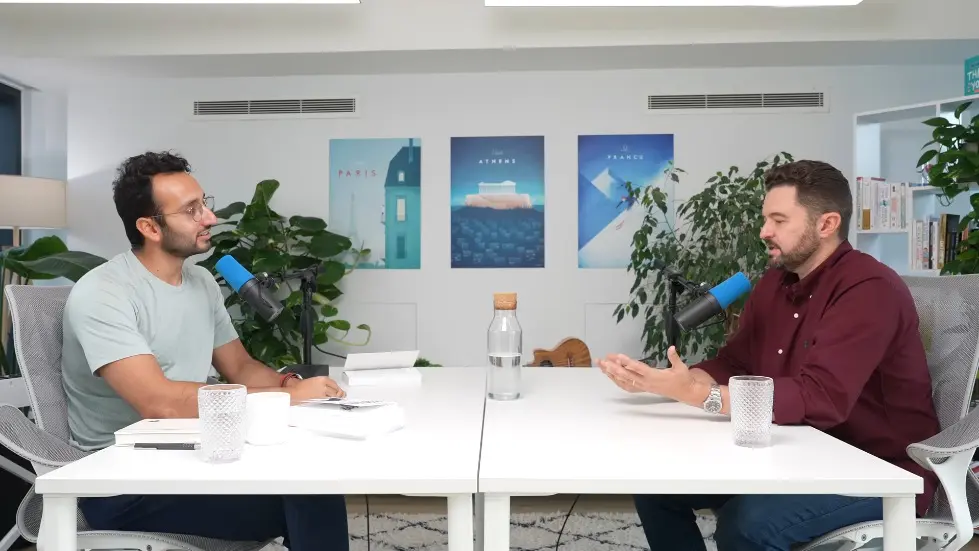
Starting a Lead Generation Company
- The company worked with financial planners and franchisors.
- The company did a road show of events introducing franchises to potential franchisees.
- The company received 15% of the franchise success fee as their marketing fee.
- The company negotiated a deal with a franchisor they thought was great.
- The company advertised through direct mail campaigns and fax broadcasting.

Standing Out in a Saturated Market
- A franchise expo with 300 franchisors is too saturated.
- Standing next to competitors does not work for franchisors.
- The company put franchisors in front of 50 potential customers instead of shoulder to shoulder with competitors.
- The company advertised through direct mail campaigns and fax broadcasting.
- The company negotiated a deal with a franchisor they thought was great.

Brain Care with Heights
- Heights is a brain care smart supplement that contains over 20 evidence-based micronutrients to keep your brain and body healthy.
- It is easy to take, just two capsules every morning.
- You can sign up for a monthly or quarterly subscription.
- Use the coupon code Ali 15 at checkout to get 15% off the already discounted price of the quarterly subscription.
- Heights is very evidence-based and has tons of articles on their website with links to all the different papers they've cited.

Short Form Book Summaries
- Short Form is the world's best service that summarizes books.
- They have a one-page summary and chapter by chapter breakdowns with interactive exercises.
- Short Form covers non-fiction books from a variety of genres, including business, motivation, education, lifestyle, and communication.
- Subscribers get to vote on what book they cover next.
- You can sign up for a completely free five-day trial at shortform.com/deepdive.

Creating an Introduction Event
- Big companies promote their core business, but that's not what you want to do.
- Create an introduction event that is a low-risk first step to introduce the idea.
- For example, a financial planning company could run events on understanding the current market and hearing from a financial planning expert.
- Give attendees free or cheap value at the event, then invite them to book a meeting with a financial planner.
- You can get paid based on how many people put their name in the diary or how many of those convert to a paid customer for the financial planner.

Early Success
- Daniel Priestley's first mentor taught him that success can happen quickly if you tap into a trend.
- His first business, a lead generation marketing business, reached 10.7 million in sales within three years.
- He had a team of 20 people working out of a seven-bedroom house.
- He traveled constantly and stayed in five-star hotels and Michelin star restaurants.
- Despite the stress, it was an amazing start to life.

J Curve vs. Consulting Business Models
- There are two types of business models: J curve and consulting.
- J curve businesses lose money before making money, such as technology or restaurants.
- Consulting businesses have low overhead and can make money quickly, such as optimizing manufacturing processes.
- Content creation, such as YouTube channels, is a J curve business because it requires a lot of time and effort before hitting the monetization threshold.
- People can get discouraged because they're not seeing a return on investment right away.

Building a Business from Scratch
- Daniel Priestley's book "Oversubscribed" provides a playbook for starting a business from wherever you are with a full-time job.
- He recommends starting with a side hustle and building a community around it.
- Once you have a community, you can start to monetize it.
- He also recommends focusing on creating value for your customers and building a brand that people want to be a part of.
- It's important to have a clear message and to be able to communicate it effectively.

The Mindset of a Multi-Million Dollar Entrepreneur
- Successful entrepreneurs have a growth mindset and are always learning and improving.
- They are comfortable with taking risks and making mistakes.
- They focus on creating value for their customers and building a brand that people want to be a part of.
- They are able to communicate their message effectively and build a community around their brand.
- They are able to adapt to changing circumstances and pivot their business when necessary.

Non-J Curve vs J Curve Businesses
- Non-J curve businesses have a sales process that involves convincing clients to part with a sizable chunk of cash.
- These businesses generate leads and make sales through a sales process.
- Non-J curve businesses typically involve thousands to tens of thousands of dollars per sale.
- J curve businesses rely on a frictionless sale, such as a free trial or a free piece of content.
- Non-J curve businesses are often overlooked in business podcasts and discussions.

The Freelancer Model
- The freelancer model involves selling oneself as component labor to someone else who has a bigger outcome in mind.
- Freelancers charge a premium because people don't have to commit to a long package.
- Entrepreneurship involves separating from the mindset of being component labor and moving towards being outcome-focused.
- Entrepreneurs should have expertise in organizing other people's labor and selecting the right people for the job.
- Entrepreneurs should aim to avoid being a component in somebody else's system and instead stand for an outcome.

Becoming an Expert in a Specific Outcome
- Entrepreneurs should focus on becoming an expert in a specific outcome and building a solution for customers.
- Entrepreneurs should have radical empathy with the customer and understand what they want and why they are buying it.
- Entrepreneurs should aim to put together a team that knows how to optimize the outcome and deliver it to the customer.
- Entrepreneurs should aim to be the key person of influence and oversee the outcome rather than being a component in someone else's system.
- Entrepreneurs should avoid default paths such as getting a normal job or becoming a freelancer.

Examples of Non-J Curve Businesses
- A friend from university who does manufacturing consulting for fashion companies.
- Businesses that involve a sales process and generate leads.
- Businesses that involve convincing clients to part with a sizable chunk of cash.
- Businesses that involve thousands to tens of thousands of dollars per sale.
- Non-J curve businesses are often overlooked in business podcasts and discussions.
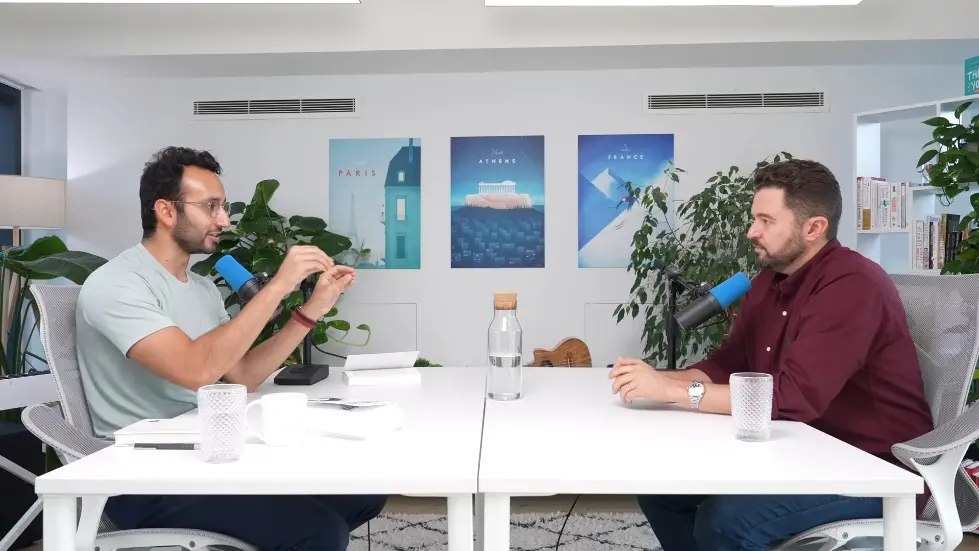
Downsides of Freelancing
- Winning clients is a significant part of the job.
- You may have to split your time between several companies to have a regular income.
- There is no real career path unless you create one.
- You may lack motivation because you have to create your own performance standards.
- You may get caught up in finances, taxes, and chasing invoices.
- You have all the downsides of having a business without the upside scalability.

Thinking More Entrepreneurially
- Create a writing agency.
- Create packages of content intellectual property that you can resell.
- Create your own written assets that can be used in any number of ways.
- Think about what problem you are trying to solve in the world.
- Organize labor systems, IP, technology, and put them together to solve the problem.
- Entrepreneurs need to park their own needs and problems to research what somebody else needs.

Example of Entrepreneurial Thinking
- Instead of thinking about being a lead gen person running events, think about what problem these guys have and how to solve it.
- Marry up a set of skills that you have acquired and a business model that you know with looking at these people really clearly.
- Think about what problem the customers have and how to solve it.
- Don't think about your own needs and problems.
- Think about what somebody else needs.
- Build a business to solve the problem.

Daniel Priestley's Background
- As a university student, he was broke and did whatever he could to survive.
- He worked as a Pizza Hut delivery driver, late-night barmen, and did door-to-door sales for a roof insulation company.
- He started working for a startup bureau and earned a salary.
- He started his own business and made millions.
- He wrote books on entrepreneurship and business, including "Oversubscribed."
- "Oversubscribed" provides a playbook for starting a business from wherever you are with a full-time job.

Adjusting Psychology Around Money
- Money was scarce and hard to come by for Daniel while he was in university.
- His mentor asked him how much he thought was a lot of money, and Daniel said $52,000 a year.
- The mentor put Daniel in a sales role and told him to aim for $1.2 million a year worth of sales.
- The mentor asked Daniel to bring him $1,000 in cash and carry it in his pocket at all times.
- Carrying a bunch of cash shifted Daniel's energy towards money and brought up his issues around money.

Lessons from Daniel's Mentor
- Daniel's mentor banned him from watching the news, saying it only reports statistically irrelevant things.
- The mentor taught Daniel to focus on the things that matter and to be proactive.
- The mentor encouraged Daniel to think about what he wanted to achieve and to take action towards it.
- The mentor taught Daniel to be resourceful and to find ways to achieve his goals.
- The mentor emphasized the importance of building relationships and networking.

The Importance of Being Oversubscribed
- Being oversubscribed means having more demand for your product or service than you can supply.
- Being oversubscribed allows you to charge a premium price and have more control over your business.
- Being oversubscribed requires you to have a clear message, a unique value proposition, and a strong brand.
- Being oversubscribed requires you to focus on your ideal customers and to create a community around your brand.
- Being oversubscribed requires you to have a system for delivering your product or service and to constantly improve it.

The Playbook for Starting a Business
- The playbook for starting a business involves identifying a problem that you can solve and a market that needs your solution.
- The playbook involves creating a minimum viable product and testing it with your ideal customers.
- The playbook involves building a community around your brand and creating a system for delivering your product or service.
- The playbook involves leveraging your network and resources to grow your business and attract investors.
- The playbook involves constantly improving your product or service and adapting to changes in the market.

Benefits of a News Blackout
- Reading news is a waste of time and energy.
- News is often negative and can create negative emotions.
- News is often about things that you cannot control or influence.
- A news blackout frees up time, headspace, and negative emotions.
- Focus on building your own platform and life instead of worrying about news.

Importance of Lead Generation
- Everything is downstream from lead generation.
- Generating warm leads is crucial for building a successful business.
- Blowing up the lead generation tap can transform a struggling business.
- Lead generation is a crushing problem for most small businesses.
- Lead generation impacts every area of a business owner's life.

The Lead Generation Problem
- Most small businesses struggle with lead generation.
- The lead generation problem prevents business owners from taking holidays and switching off on weekends.
- Lead generation is the biggest problem for the majority of small businesses.

Skillshare Sponsorship
- Skillshare is a great place to learn anything online.
- There are thousands of classes on various topics, including entrepreneurship and business.
- The speaker has 13 classes on Skillshare about productivity.
- Listeners can access the classes for free by going to skillshare.com/deepdive.
- Listeners can get a one-month free trial and choose to continue with the subscription after the trial is over.
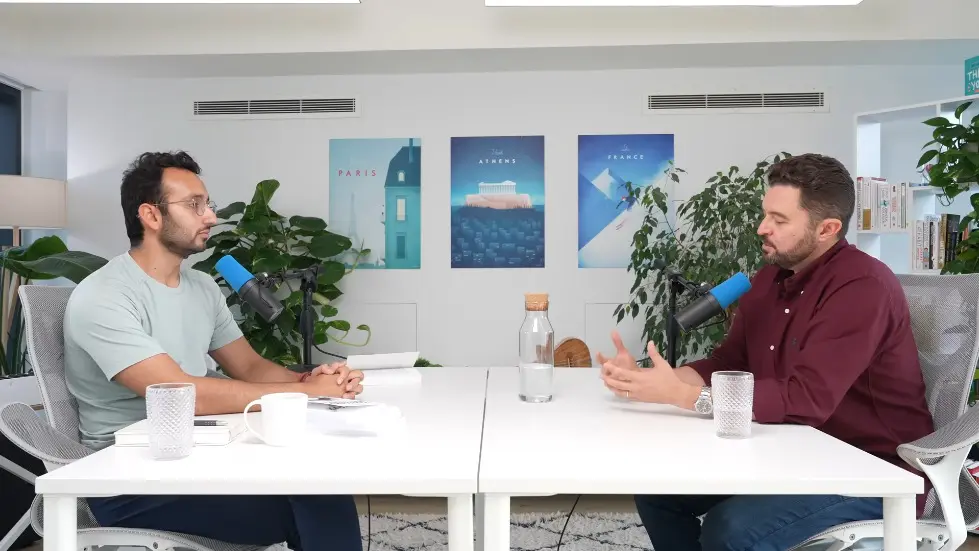
Understanding Why People Buy
- People buy to relieve a psychological tension between what they have and what they want.
- There are people actively looking for things and people who are passively dealing with a frustrating problem.
- Understanding why people buy and what's going on under the surface is powerful.
- Some people have a dormant psychological tension which they're not consciously aware of.
- You can spark a decision-making process in people who are not actively searching.

Emotion, Logic, and Urgency
- Every sale is triggered by a combination of emotion, logic, and urgency.
- Some businesses are naturally good at generating emotion in their customers but not logic or urgency.
- Some businesses are really good with the logical side of what you should buy but they're not very good at the emotion or the urgency.
- Great businesses understand how to do logic, emotion, and urgency in the right doses.
- Apple is a great example of a company that gives you logic, emotion, and urgency.

Learning Sales and Marketing Skills
- Read "Oversubscribed" and "Scorecard Marketing" to learn sales and marketing skills.
- Survey your customers to ask lots of questions about why people are buying from you or not buying from you.
- Asking people to quantify with a number is really powerful because that is logic and emotion coming together.
- Conducting research of just 30 people is often very revealing.
- Sales and marketing can be seen as bad or evil, but it's important to unlearn this mindset.

Justifying and Convincing People to Buy
- When you're a creator and you put your heart and soul into something, the idea of justifying and convincing people to buy can be difficult.
- It's important to understand that sales and marketing are not bad or evil, but rather a way to communicate the value of what you've created.
- It's important to have confidence in what you've created and to believe that it can help people.
- It's also important to understand that not everyone will be a customer, and that's okay.
- Focus on finding the people who will benefit from what you've created and communicate the value to them.

The Process of Discovery in Marketing
- Humans go through a process of discovery before buying something.
- Discovery involves understanding the logic, building trust, and feeling a sense of timing.
- Research shows that people go through 11 touchpoints and 7 hours of contact before buying something.
- Marketing accelerates the process of discovery at scale with more people.
- Urgency is a necessary part of marketing, but it can be overused.
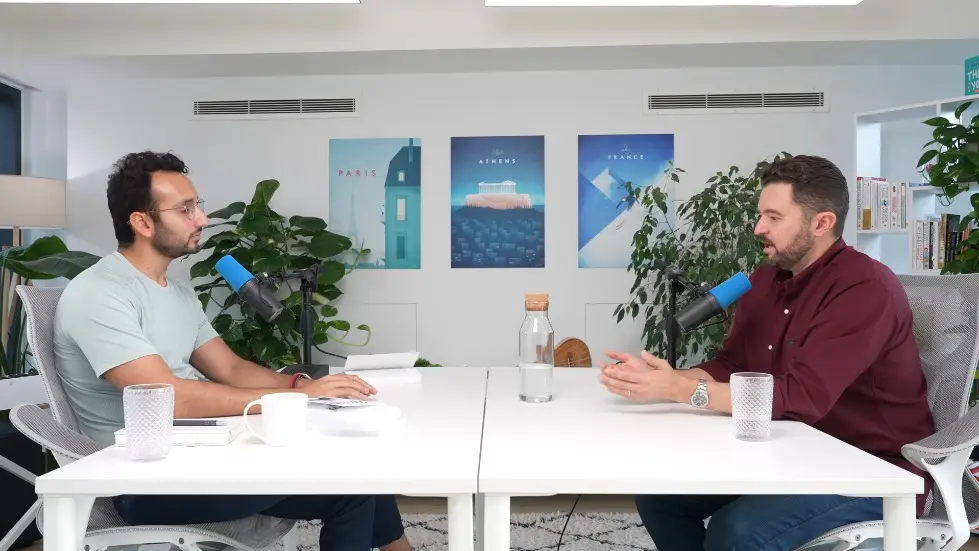
The Subtext of Urgency in Marketing
- The subtext of urgency is necessary for most products.
- Genuinely being oversubscribed is the most viable subtext of urgency.
- Oversubscription means there is a limited number available or a start date.
- Transparency in demand and supply tension is necessary for the subtext of urgency.
- Transparency shows that there are a lot of people who want the product and only a limited number available.

The Frustrating Thing About Humans and Taking Action
- Humans have a subconscious belief that taking no action is safe.
- Creating an urgency queue is necessary for successful long-term businesses.
- Businesses that don't do logic, emotion, and urgency are not profitable.
- Profitable businesses turn over money and are very profitable.
- Airlines are an example of businesses that turn over money but are not very profitable.
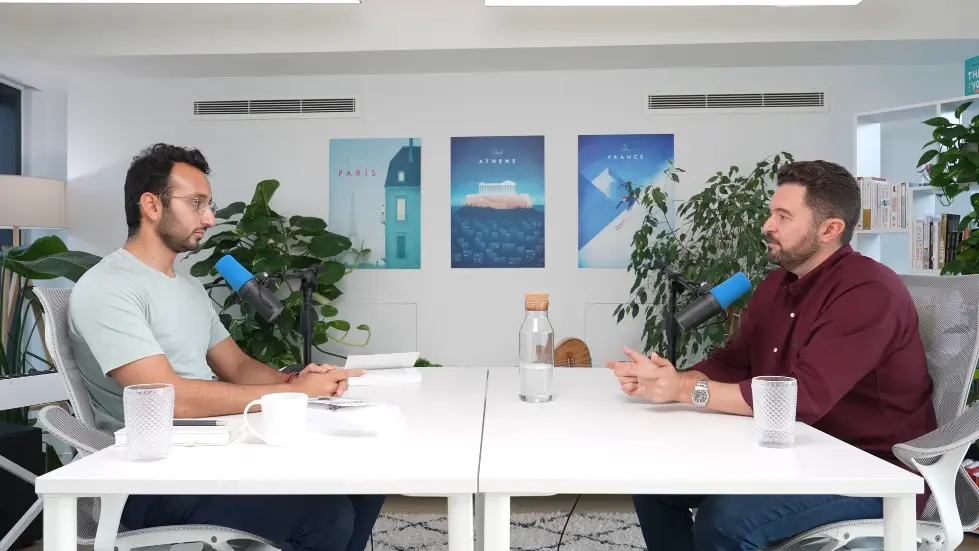
Creating Urgency in Marketing
- Creating urgency is necessary for successful marketing.
- Urgency triggers are necessary for creating urgency.
- The ickiest part of urgency is telling people that now is the right time to buy.
- Marketing should communicate the emotional payoff and logic of the product.
- Artificially selling out or booking smaller venues can create the subtext of urgency.
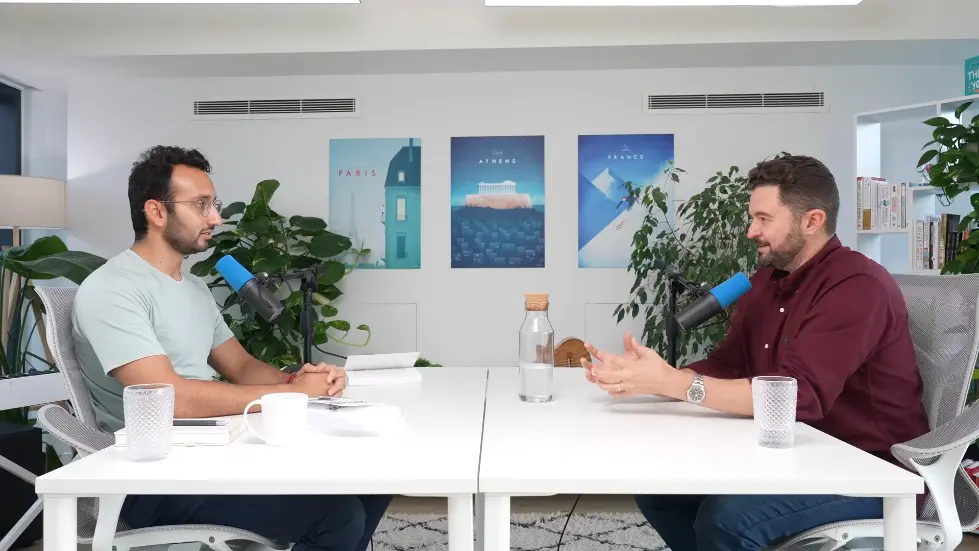
Business Models: Airline vs Rolex
- Airlines have complex business models with high customer service expectations and safety standards, but only have 5-10% profit margins due to freely available seats.
- Rolex has hardly innovated its product, has terrible customer service, and can be easily copied, but has a waiting list of 18 months and is massively profitable with 70% profit margins.
- Rolex's success is due to the emotions of status and achievement, the logic of holding value and being a hedge against inflation, and the urgency of the waiting list.

Lessons Learned and Moving to London
- Three big lessons learned: the value of money, no news is good news, and everything is downstream of lead generation.
- After a falling out with a major client who disrespected and tried to bully him, Priestley and his business partner decided to shut down their Australian business and move to London to launch an office there.
- They saw it as a new adventure and a chance to restart with a new client base.

Choosing Adventure Over Comfort
- At 24 years old, Priestley had a net worth in the seven figures, but chose to keep working and take on new challenges.
- He saw moving to London as a chance to travel, snowboard, and experience new things.
- He could have chosen to put his feet up and not work, but instead chose adventure over comfort.

Early Years of Entrepreneurship
- Daniel Priestley's early business involved running events, going to restaurants, nightclubs, and driving fancy cars.
- He was surrounded by mentors who had businesses doing 50 million to 100 million and had built billion-dollar businesses.
- He was invited to speak at a conference in Bali and got paid to hang out backstage with all the people.
- He launched a similar business in London, working with international speakers to launch them in the UK market, and made four million pounds in the first year.
- At the end of year one, they hired the London Palladium Theater, and they did 600 grand worth of sales in the following week.

The Global Financial Crisis
- The global financial crisis came along, and the whole thing came crashing down.
- They went from making millions down to 400,000 in 2009.
- Their Singaporean client almost collapsed in Asia and had to stop coming to the UK.
- Their US client was unaffordable to do the deal, and they weren't able to successfully renegotiate.
- Daniel went from living in a penthouse apartment near Chelsea to moving into his sister's spare room in Acton.

A Dark and Horrible Time
- Daniel's transition was dark and horrible, slipping on ice, almost breaking his arm, and having a bad phone call.
- It was a time of reflection and thinking through what he wanted to do next.
- He decided to try and sell the business, and a guy agreed to buy the business for 300 grand.
- On the day of exchange, the guy doesn't show up and turns out he had a heart attack and went into the hospital.
- In 2009, Daniel wrote the book Key Person of Influence, reflecting on his experience working with celebrities and authors.

Reflection and Moving Forward
- Daniel reflected on what he was really excited about, social media, and the new emerging technology called Facebook, YouTube, and Twitter.
- He realized that he wanted to help entrepreneurs build their personal brands and become key people of influence.
- He started a new business, Dent Global, and launched a program called Key Person of Influence.
- The program helps entrepreneurs become more visible, valuable, and connected in their industry.
- He wrote several books, including Oversubscribed, which provides a playbook for starting a business from wherever you are with a full-time job.

Building Personal Brands
- Daniel Priestley launched the Key Person of Influence Accelerator in 2010.
- The program was a huge success and launched in multiple cities around the world.
- The program teaches individuals how to build personal brands and start new types of businesses.
- The five-step method to become one of the most highly valued and highly paid people in your industry is taught in the program.
- The program has been successful and has helped many individuals become successful entrepreneurs.

Entrepreneurial Revolution
- The book "Entrepreneurial Revolution" was written after "Key Person of Influence."
- The book outlines the new rules of the digital age and how to leverage them.
- The book helps individuals start businesses that are in alignment with the new rules.
- The book teaches individuals how to launch a successful business with a different mindset.
- The industrial revolutionary type mindset is still prevalent among many people.

The Changing World
- The world is changing in a massive way.
- There is a new set of rules for the digital age.
- Most people were raised in a schooling system that was built for the industrial age.
- The book "Entrepreneurial Revolution" outlines how to leverage the new rules.
- The health and school systems are entrenched in the industrial age.

Starting a Business
- Individuals can start a business from anywhere with a thousand dollars startup costs.
- People can live and work from anywhere in the world.
- The digital age has its own set of rules and a different economy.
- The book "Entrepreneurial Revolution" teaches individuals how to start a business in alignment with the new rules.
- The book outlines how to build a successful business with a different mindset.

The Industrial Age and the Schooling System
- The schooling system teaches kids not to be disruptive, but in the business world, being disruptive is a good thing.
- Component labor is the name of the game in the schooling system, where your job is to become a useful component of labor to someone's big machine.
- Students are not taught anything about sales, marketing, money management, ideation, minimum viable product testing, or market surveys.
- The school system encourages a perfectionistic attitude, where students feel like their self-worth is wedded to the grade they receive.
- There is an unhealthy obsession with qualifications, where people feel like they need permission to do something.

The Entrepreneurial Mindset
- The most curious person wins, not the most qualified person.
- Entrepreneurs adopt a mindset of not knowing rather than knowing.
- Some of the best entrepreneurs ask dumb questions because they want to deeply understand the problem.
- Entrepreneurs are comfortable with uncertainty and taking risks.
- They focus on solving problems and creating value for their customers.
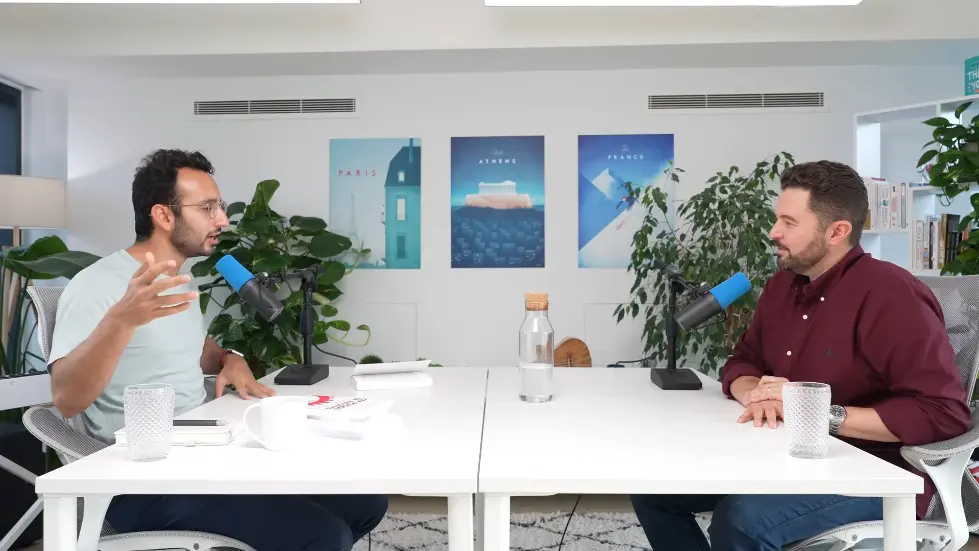
The Importance of Speed to Market
- In school, students are taught to hand in their assignments when they are perfect, but in the business world, speed to market is more important.
- Entrepreneurs need to be able to produce something that meets minimum standards and is directionally correct.
- Extra points are given to entrepreneurs who can pull together a team of people to work together and get something done quickly.
- Being the first person to hand in an assignment is more important than being the most perfect.
- Entrepreneurs need to be able to adapt quickly and pivot when necessary.
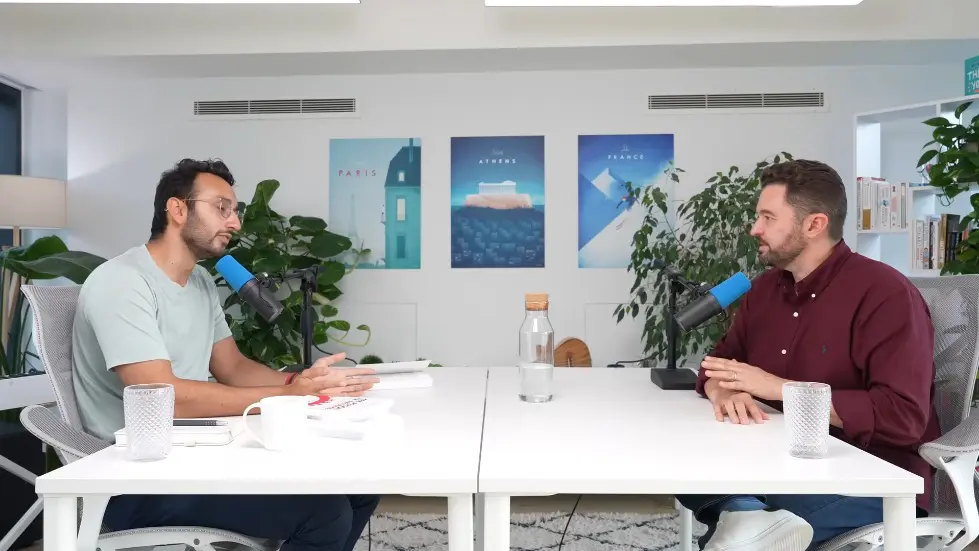
The Role of Qualifications in Component Labor
- In component labor, qualifications are necessary because the cog in the machine has to be perfectly fit for the machine.
- There are certain professions, like medicine, where qualifications are necessary.
- However, in the entrepreneurial world, qualifications are not as important as curiosity and problem-solving skills.
- Entrepreneurs need to be able to think outside the box and come up with creative solutions to problems.
- Entrepreneurs need to be able to take action and not wait for permission to do something.

Developing the Mindset of an Entrepreneur
- Stay curious and humble, ask questions even if they seem dumb.
- Reptile mindset is fight, flight, freeze, anger, aggression, while autopilot is learn and repeat.
- Visionary mindset is strategic thinking, inspiration, love, connection, empathy, and curiosity.
- Ideation is the process of coming up with at least 10 ideas and narrowing them down to the best one or two.
- Joining an entrepreneurial team is better than starting one yourself.

Transitioning from a Normal Job to Entrepreneurship
- Ideation is the first step to becoming an entrepreneur.
- Joining an entrepreneurial team is better than starting one yourself.
- Consulting for a smaller company can be a good way to gain experience.
- People often hesitate to take a pay cut to pursue entrepreneurship, but it's important to consider the long-term benefits.
- Developing a side hustle while still working a full-time job can be a good way to transition into entrepreneurship.
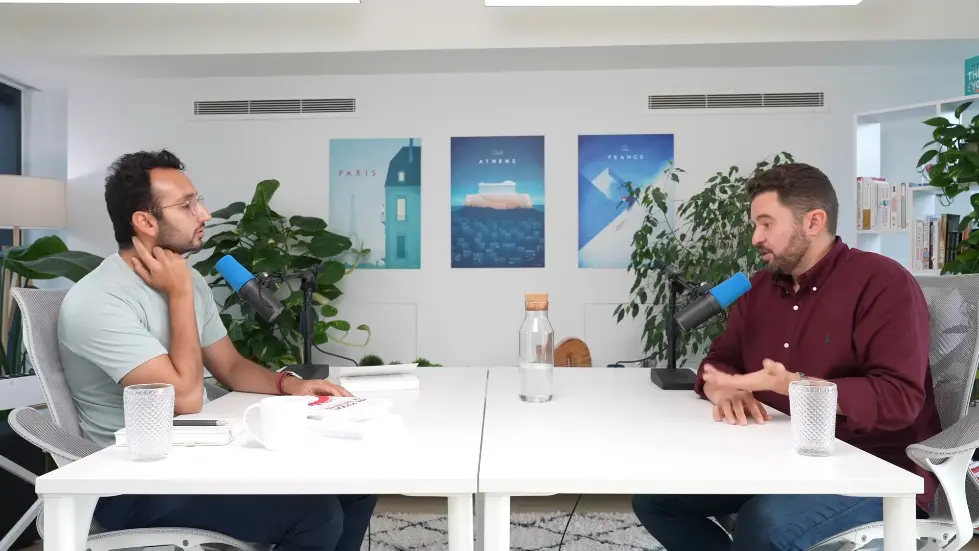
The Importance of Being Oversubscribed
- Being oversubscribed means having more demand than supply.
- It's important to create a product or service that people want and need.
- Creating a sense of urgency and exclusivity can help generate demand.
- Building a community around your brand can help create demand and loyalty.
- It's important to focus on quality over quantity when it comes to customers.

The Role of Marketing in Entrepreneurship
- Marketing is about creating a message that resonates with your target audience.
- It's important to understand your target audience and what motivates them.
- Marketing should be focused on creating value for the customer.
- Building a personal brand can be a powerful marketing tool.
- Marketing should be an ongoing process, not just a one-time event.

Considering a Pay Cut
- Some people can't take a pay cut, so it's important to figure out your after-tax earnings.
- A pay cut may not be as bad as it seems, especially if you're spending a lot of money on commuting or other expenses related to your job.
- You can view a pay cut as an investment in your startup equity.
- You can also consider doing some evening consulting to earn extra money.
- There are many options available to you, so it's important to explore them all.

Work-Life Balance
- Work-life balance is a luxury that you can afford once you've achieved a certain level of wealth and success.
- The vast majority of people who earn a lot of money have a period of being well out of balance.
- When you're creating a breakthrough, you need to be crazy focused on that goal.
- Starting a business requires a lot of time and effort, so work-life balance may not be possible in the early stages.
- It's important to be realistic about the amount of time and effort required to start a successful business.
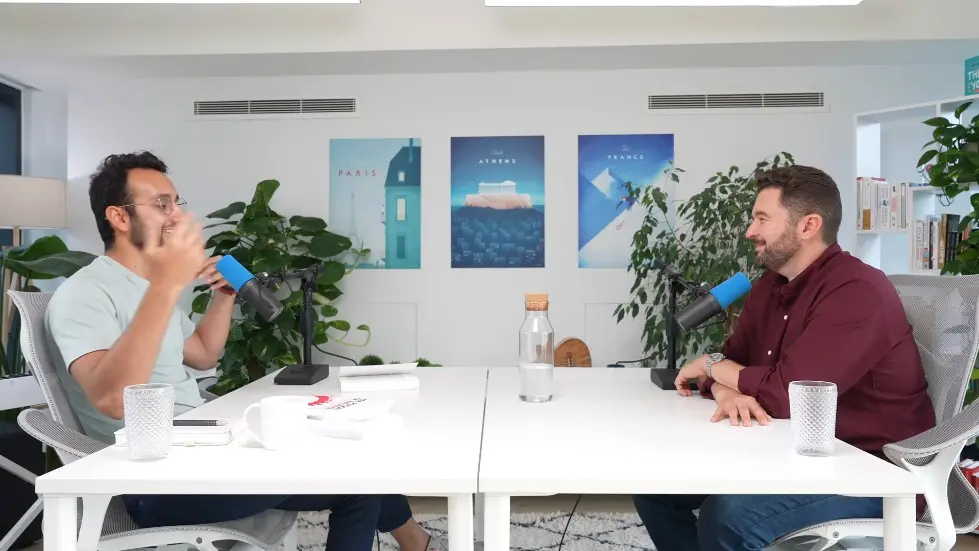
Creating an Asset
- Starting a business involves creating an asset, sweating that asset, and keeping track of what's going on.
- You need to be involved in strategy, operations, sales and marketing, finance, and HR.
- If you're super optimized, you might be able to give each of those things 15 hours a week, which adds up to 60 hours.
- Starting a business requires a lot of time and effort, but it can be very rewarding in the end.
- You need to be prepared to work hard and make sacrifices in order to achieve success.
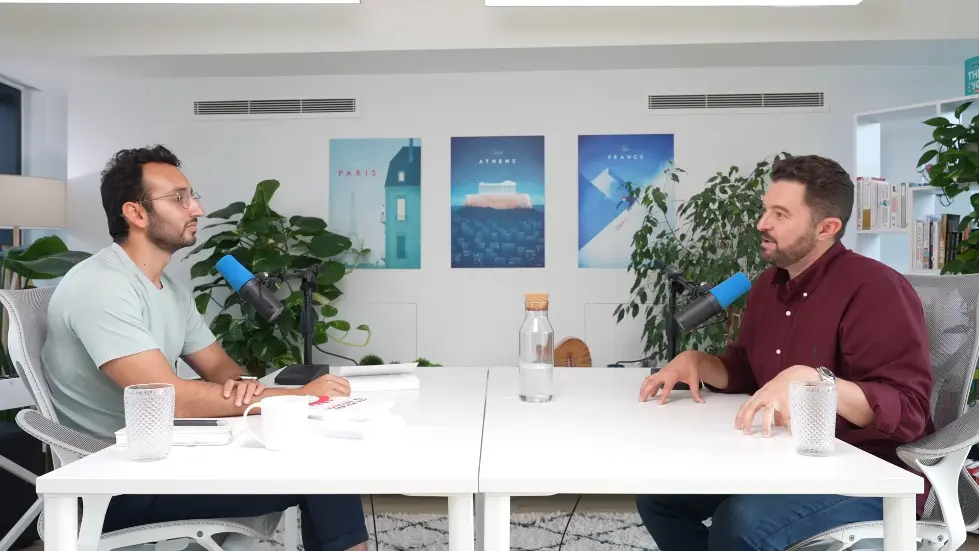
Staying Motivated
- It's important to stay motivated when starting a business.
- You need to have a clear vision of what you want to achieve and why.
- You need to be passionate about your business and believe in what you're doing.
- You need to be willing to take risks and make mistakes.
- You need to be persistent and keep going even when things get tough.

Building a Team
- Having a team allows for work-life balance.
- With a team, there are people to refine and implement ideas.
- Team members can focus on their specific roles, leading to increased productivity.
- The division of labor allows for people to become experts in their specific roles.
- Building a team takes time and effort, but it is worth it in the long run.

Work-Life Balance
- Work-life balance tends to come later in the entrepreneurial journey.
- Many successful entrepreneurs got to work-life balance by being completely burnt out.
- Building a successful business requires putting in serious time and effort.
- Most successful entrepreneurs start their businesses in their 40s.
- Regretting the time spent in hustle mode is rare among successful entrepreneurs.

The Well-Worn Path
- The most well-worn path is to work for someone in your 20s, do an apprenticeship in your 30s, and start a business in your 40s.
- Most successful entrepreneurs start their businesses at 42 and sell them at 57.
- Regretting starting a business later in life is rare among successful entrepreneurs.
- Life gets more complicated as we get older, making it harder to start a business.
- Starting a business later in life allows for more experience and connections.

Side Hustles and Work-Life Balance
- Having a side hustle on top of a full-time job can be incompatible with having a social life, hobbies, and self-care.
- It is important to prioritize and make time for what is important.
- Starting a business takes time and effort, but it is worth it in the long run.
- It is important to recognize that building a successful business requires sacrifice and hard work.
- Starting a business later in life allows for more experience and connections.

The Risks and Rewards of Entrepreneurship
- Choosing to become an entrepreneur is a huge risk.
- Doctors have a safe path with a predictable outcome, but entrepreneurship is unpredictable.
- The market doesn't care about your personal needs or work-life balance, it only cares about meeting its own needs.
- Entrepreneurship is an active service that creates solutions for others and creates jobs.
- Signals from the market are important to de-risk the bet of starting a business.

Testing Ideas Without Spending Money
- Ideation involves coming up with 10-1500 ideas and narrowing them down.
- The next step is to test those ideas without spending money.
- Minimum viable product (MVP) is a way to test ideas by setting up a scorecard or event to see if there is interest.
- For example, a doctor wanting to start a health-related business could try to get 30-40 people to attend an event on that topic.
- MVP helps to validate ideas and de-risk the bet of starting a business.

Entrepreneurship as a Gift to the World
- Entrepreneurship is a gift to the world that solves problems in a scalable way.
- As an entrepreneur, you will face hard problems as you grow, but the easy stuff will be solved by the people you hire.
- It's important to have a sufficient number of signals from the market that there is a need for your product or service.
- It's also important to understand the rules of the game of entrepreneurship and recognize that outcomes may vary.
- Working for an existing business or entrepreneur can help you understand the lifestyle and rules of entrepreneurship.
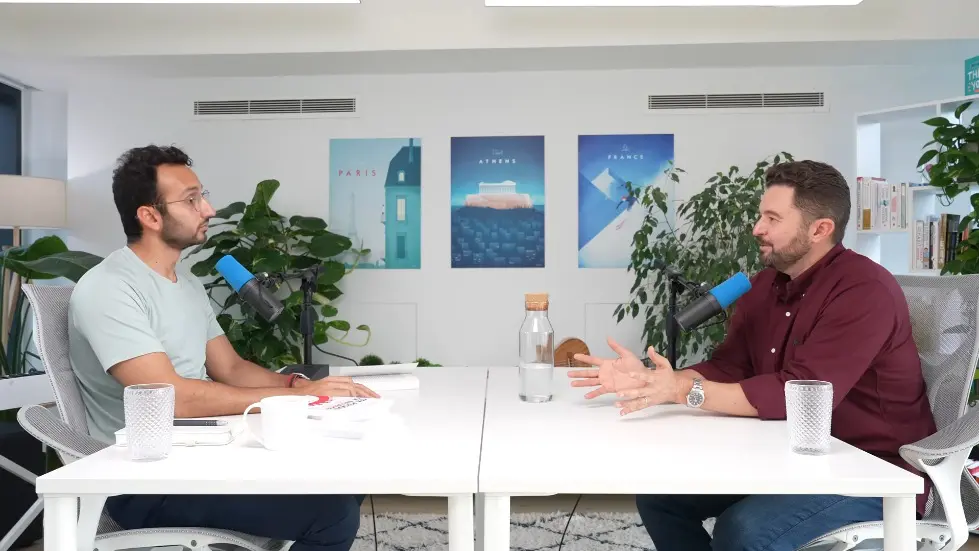
The Importance of Market Signals
- Market signals are important to de-risk the bet of starting a business.
- Signals from the market show that there is a need for your product or service.
- It's important to get good signals from the market before quitting a full-time job to start a business.
- Market signals can be obtained through surveys or events to test the viability of an idea.
- It's important to be willing and able to make your product or service work for the marketplace.
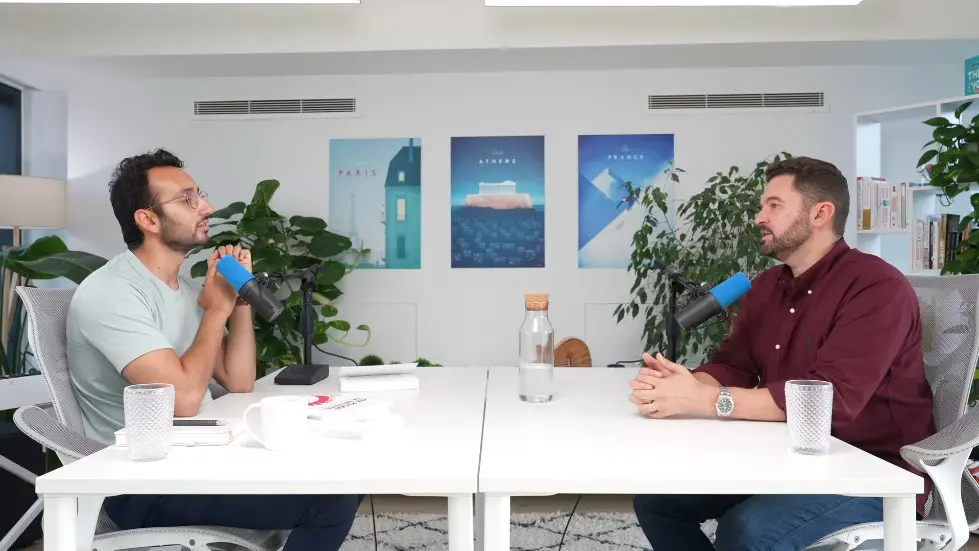
Using Scorecards to Validate Business Ideas
- A scorecard is an online survey or questionnaire that people can use to benchmark themselves.
- It is an MVP or minimum viable product that collects data and signals of interest.
- Scorecards help entrepreneurs generate leads and validate business ideas.
- Scorecards can be used to test different business ideas and see which ones generate the most interest.
- The Key Person of Influence Accelerator launched a scorecard that became a massive success, generating millions of pounds in sales.
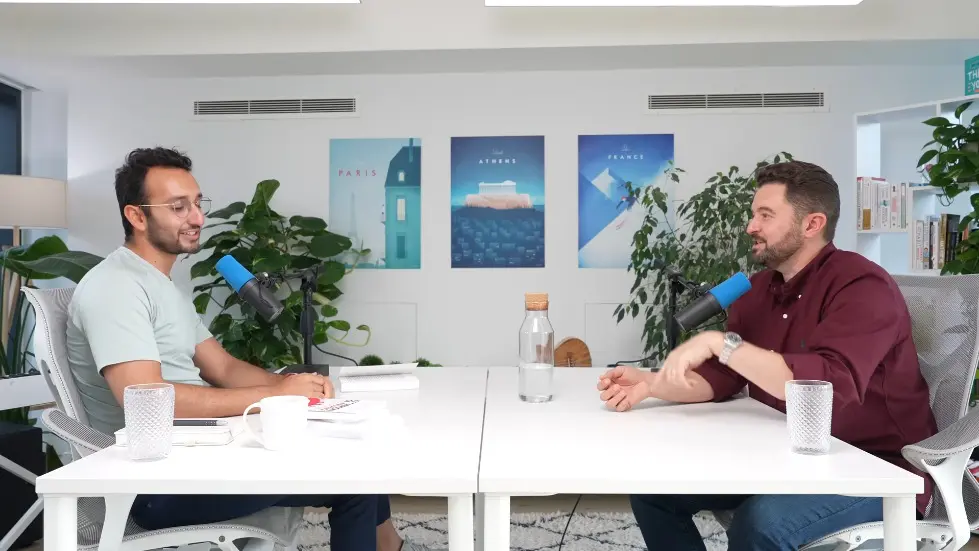
The Benefits of Scorecards
- Scorecards provide quantification and psychological tension, which motivates people to improve.
- Scorecards can be used to measure different areas, such as productivity, diet, or marathon running.
- Scorecards help entrepreneurs collect proprietary data and leads.
- Scorecards can be used to create courses and resources that address people's pain points.
- Scorecards help entrepreneurs own their own database and reduce their reliance on social media.

How to Create a Scorecard
- Scorecards can be created using Score App, which provides a template with a landing page, questionnaire, results page, and PDF.
- Entrepreneurs can use their knowledge and expertise to create scorecards that address people's pain points.
- Scorecards can be used to identify people's weaknesses and provide them with resources and tools to improve.
- Scorecards can be used to test different business ideas and see which ones generate the most interest.
- Scorecards help entrepreneurs collect proprietary data and leads that they can use to grow their business.

The Importance of Validating Business Ideas
- Validating business ideas helps entrepreneurs avoid wasting time and money on ideas that don't work.
- Scorecards help entrepreneurs validate business ideas by collecting data and signals of interest.
- Entrepreneurs should focus on generating leads and validating business ideas before investing time and money in them.
- Scorecards can be used to test different business ideas and see which ones generate the most interest.
- Validating business ideas helps entrepreneurs reduce their risk and increase their chances of success.
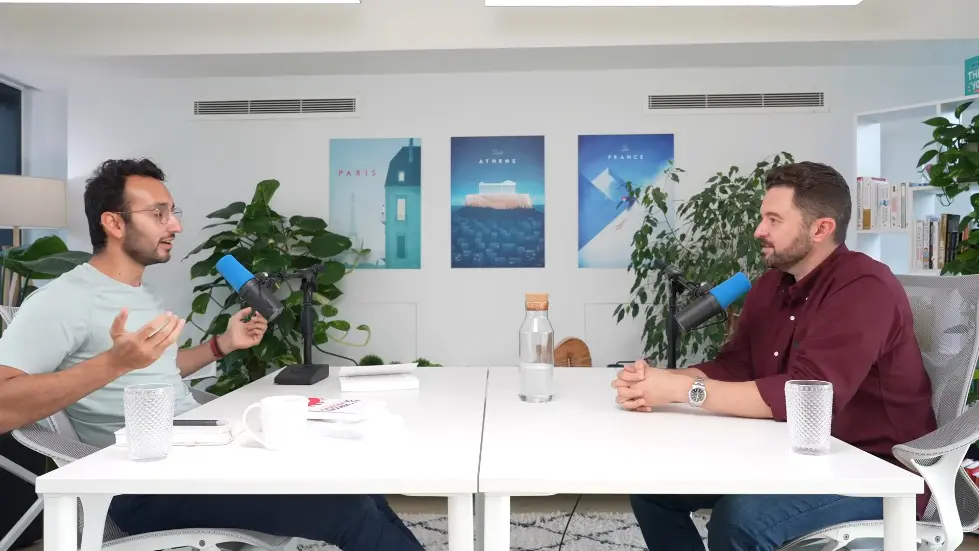
Creating a Scorecard for Lead Generation
- Scorecards turn core syllabus into questions.
- People take the scorecard to identify their weaknesses and strengths.
- The scorecard quantifies the improvement and guarantees ROI.
- Creating multiple scorecards can help choose the best idea for a course.
- Scorecards can be used for lead generation and MVPs.

Testing an Idea with Lead Generation
- Lead generation is the first thing to test for any idea.
- Generating leads is the most important thing for any business.
- A lead is any signal of interest from a potential customer.
- Product Market fit is adjusting the product to meet the market.
- Product Market fit is essential for the success of any business.
- Product Market fit involves making adjustments to the product to fit what the market wants.

Using Events for Lead Generation
- Running events can be used for lead generation and MVPs.
- Scorecards can be used as a digital version of lead generation events.
- Scorecards are always available 24/7 and can collect data on autopilot.
- Running events and scorecards can help test an idea for four months.
- Tracking the growth of leads can help determine the potential success of an idea.
- Lead generation is the most important thing for any business.

Product Market Fit
- Product Market fit is essential for the success of any business.
- Product Market fit involves making adjustments to the product to fit what the market wants.
- Product Market fit is adjusting the product to meet the market.
- Product Market fit can help determine the potential success of an idea.
- Product Market fit involves adjusting the product to meet the needs of the market.
- Product Market fit is essential for the success of any business.
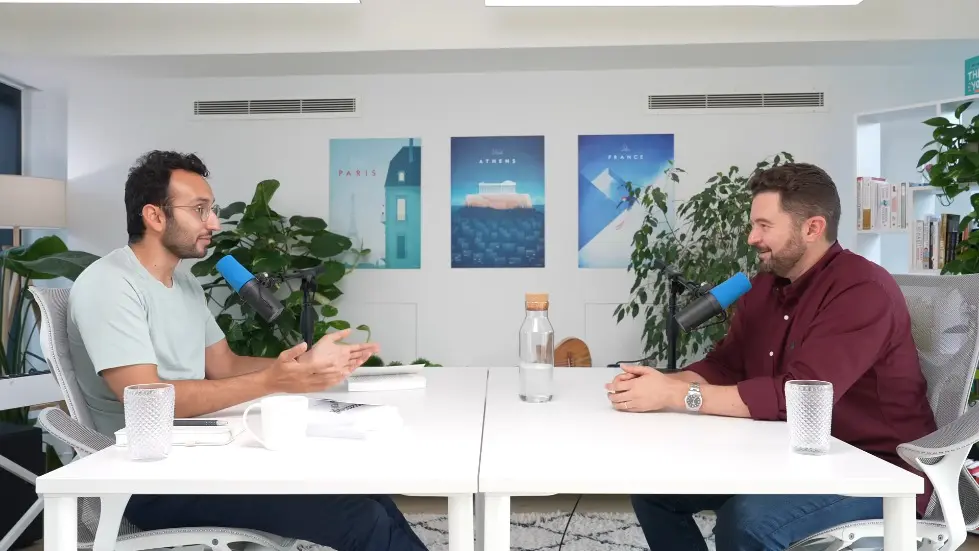
Understanding Product Market Fit
- Product Market Fit is the alignment between the values of the business owner and the values of the customer.
- Product Market Fit is often baffling because the values of the business owner are different from the values of the customer.
- The things that are quite obvious to the person who's setting up a business are actually non-obvious to the people who are buying from the business.
- Product Market Fit is making adjustments based on the signals of interest and leads collected.
- The end result of Product Market Fit should be a landing page or a brochure that shows the offer and the product.

Creating a Brochure for Product Market Fit
- The end result of Product Market Fit is a landing page or a brochure that shows the offer and the product.
- Most people don't produce that piece of collateral that is a very important step where people can hold it, see it, and open it.
- A brochure is a very important step where people can hold it, see it, and open it.
- A brochure can be created for anything, and it doesn't necessarily have to exist.
- A brochure can be created using a little bit of time and design.

Product Market Fit for YouTube Course
- The YouTube course was initially designed to help people with 100,000 subscribers scale up by building systems and processes.
- 95% of the people who filled out the survey hadn't even made their first video.
- The YouTube course is for complete and utter beginners who have a job but don't feel like they have the time to do YouTube properly and want to learn all the basics.
- People love templates and equipment recommendations.
- Product Market Fit is often baffling because the values of the business owner are different from the values of the customer.

Testing the Market for Product Market Fit
- Testing the market is important to see if the product is a good fit for the market.
- Product Market Fit is making adjustments based on the signals of interest and leads collected.
- A landing page or a brochure is the end result of Product Market Fit.
- A brochure can be created using a little bit of time and design.
- A brochure is a very important step where people can hold it, see it, and open it.

Creating a Landing Page
- Three documents come together: brochure, offer form, and sign up.
- The brochure tells the story of the product and what's included.
- The offer form specifies the price and what the customer will get.
- The sign up is where people buy and put in their details and pay a deposit.
- For a startup, a holding deposit is often paid.
- At the MVP level, a landing page can be put up with a waiting list instead of payment gateways.

Pre-Selling a Product
- Pre-selling a product is ethical and involves inviting people to an event, taking a scorecard or survey, or joining a waiting list.
- Elon Musk pre-sold the Cybertruck by showing people what it would look like and inviting them to put down a deposit, even though it wouldn't be available for three years.
- Collecting signals from pre-orders allows for raising unlimited capital from the market to fulfill orders.
- Pre-selling is not unethical and involves an event, scorecard, or waiting list.
- A scorecard is a fun way of discussing a topic and assessing knowledge.
- Scorecards can have multiple categories and provide feedback on strengths and weaknesses.
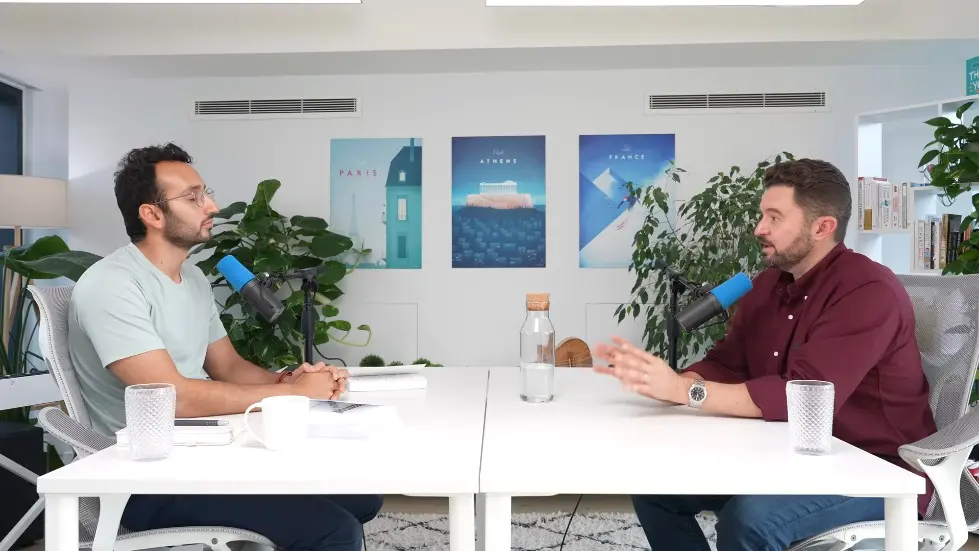
Building a Personal Brand
- Building a personal brand involves creating a unique selling proposition and a message that resonates with the target audience.
- It's important to have a clear message and to be consistent across all platforms.
- Creating content that provides value to the audience is key to building a personal brand.
- Networking and building relationships with influencers can also help to build a personal brand.
- Having a strong personal brand can lead to more opportunities and higher prices for products and services.
- It's important to be authentic and true to oneself when building a personal brand.

Scaling a Business
- Scaling a business involves creating systems and processes that can be replicated.
- It's important to have a clear vision and to focus on the core product or service.
- Outsourcing and delegating tasks can help to free up time and focus on growth.
- Creating a culture of innovation and continuous improvement is important for scaling a business.
- Having a strong team and leadership is crucial for scaling a business.
- It's important to have a growth mindset and to be willing to take risks and learn from failures.

Creating a Productivity Scorecard
- Create a productivity scorecard with 3-5 categories.
- Categories can include vision, goal setting, takeoff, staying on course, gadgets and tools, and breaks and recharge.
- Include 6 questions per category for a total of 30 questions.
- Use the scorecard to identify strengths and weaknesses in productivity.
- Use the feedback to improve tactics and gadgetry.
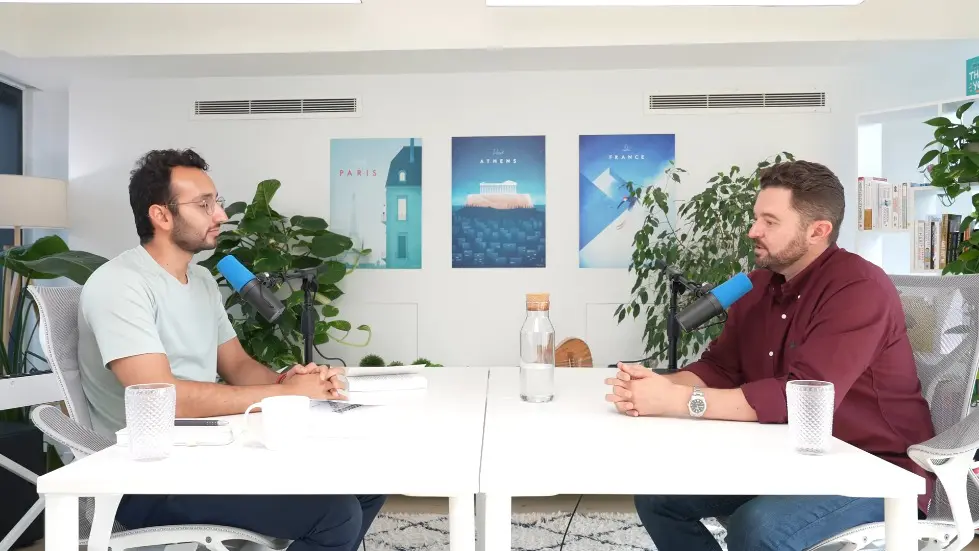
Webinars as a Low-Cost Event
- Webinars are a low-cost event that can be used to test the market.
- Webinars can be used to reduce the amount of time it takes for people to jump on or off.
- Webinars are an easy way to get feedback from potential customers.
- Webinars can be used to test the market before investing in a full product launch.
- Webinars can be used to build a customer base and generate leads.

Go-to-Market Strategy
- Go-to-market is where you turn on all your lead generation.
- Go-to-market is where you make sales and hustle.
- Go-to-market is where you might spend money on ads or do joint ventures and promotions.
- Go-to-market is where you might hire a salesperson or a team.
- Go-to-market is where you test revenue and earn money from customers.

Starting Small and Scaling Up
- Starting small with a Google sheet or MVP can be a successful strategy.
- Starting small allows for testing and feedback before investing in a full product launch.
- Starting small can help identify strengths and weaknesses in the product or service.
- Scaling up can be done through a go-to-market strategy and raising money.
- Scaling up requires a strong product-market fit and a clear understanding of the target audience.

Building a Business: Professional vs Amateur
- Professional entrepreneurs focus on creating a simple solution and making the sale.
- They often use slide decks and hands-on sales to interact with customers.
- Amateur entrepreneurs tend to build complex technology that nobody will use.
- Personal trainers who offer online training often use a Google sheet template for their clients.
- People want hand-holding, support, and accountability, which is what self-employed freelancers provide.

Building an Asset: Entrepreneur vs Self-Employed
- Entrepreneurs build scalable solutions that eventually have value and can be sold.
- They create assets that underpin their work-life balance.
- Self-employed people sell labor and don't build assets.
- Entrepreneurs create intellectual property, media, and technology as their primary assets.
- Assets do the work, allowing entrepreneurs to be anywhere in the world.
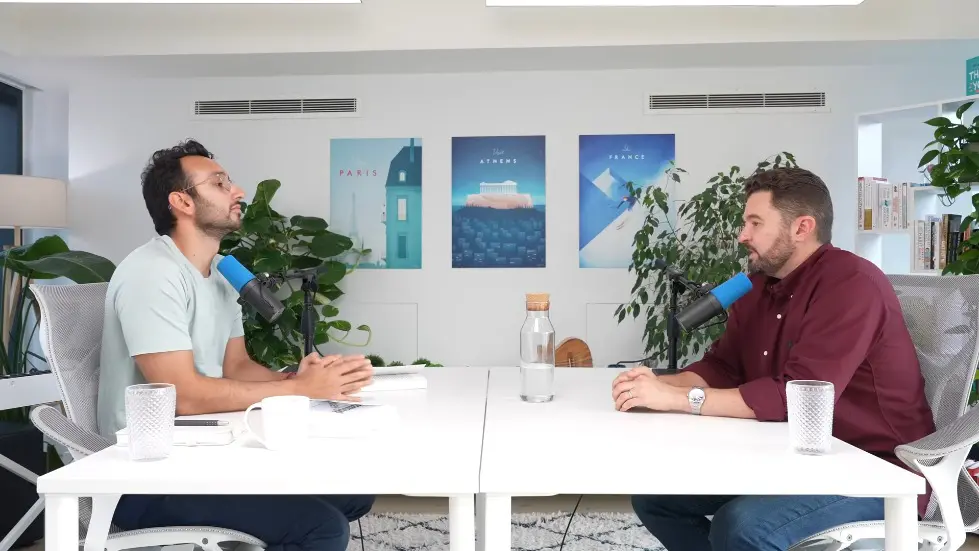
Assets in Entrepreneurship
- Intellectual property, media, and technology are the primary assets in entrepreneurship.
- A hypothetical productivity course's assets include YouTube videos, a scorecard based on intellectual property, and a frictionless sale of the online course.
- A salesperson typically fits in for sales north of a couple of thousand dollars.
- Most people want to talk to someone before committing to a sale.
- A salesperson can reassure and give the right information to leads.

Sales Function
- Adding a salesperson can increase revenue by a million a year.
- Number one reason people don't buy is lack of confidence in themselves.
- Salesperson can listen to the customer's idea and offer reassurance.
- Offer a guarantee period for testing the idea.
- With warm leads, a salesperson can make a sale a day, adding up to 400,000 a year.

Qualifying Leads
- Zoom webinars with Q&A sessions are not helpful for qualifying leads.
- Have a salesperson email and book a time in the diary for a one-on-one conversation.
- Ask about the customer's YouTube channel and where they are in their journey.
- Offer a phone call to answer any questions and offer reassurance.
- People may be too nervous to ask the figurehead questions, but they will ask a salesperson.

Starting a Business
- Anyone can start a business with a full-time job.
- Process of coming up with ideas, MVP, and product-market fit is doable.
- Offer a product or service that is genuinely useful for the customer.
- Go to market, scale, and exit are the next three steps in entrepreneurship.
- Scaling is multiple locations, new products, new markets, and new territories.
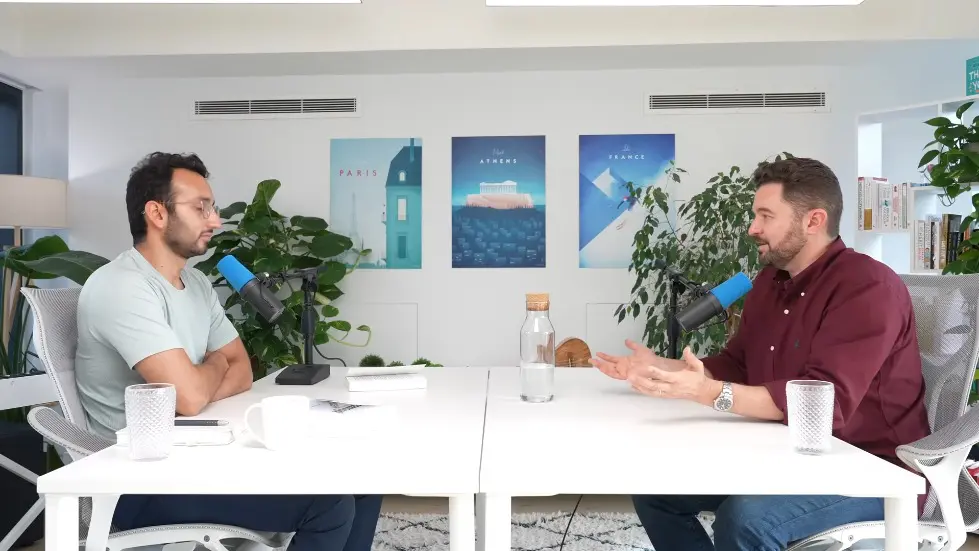
Radical Empathy
- Think about the customer's needs and offer a solution that is genuinely useful for them.
- Offer a phone call to answer any questions and offer reassurance.
- People may be too nervous to ask the figurehead questions, but they will ask a salesperson.
- Qualify leads by asking about the customer's YouTube channel and where they are in their journey.
- Offer a guarantee period for testing the idea.
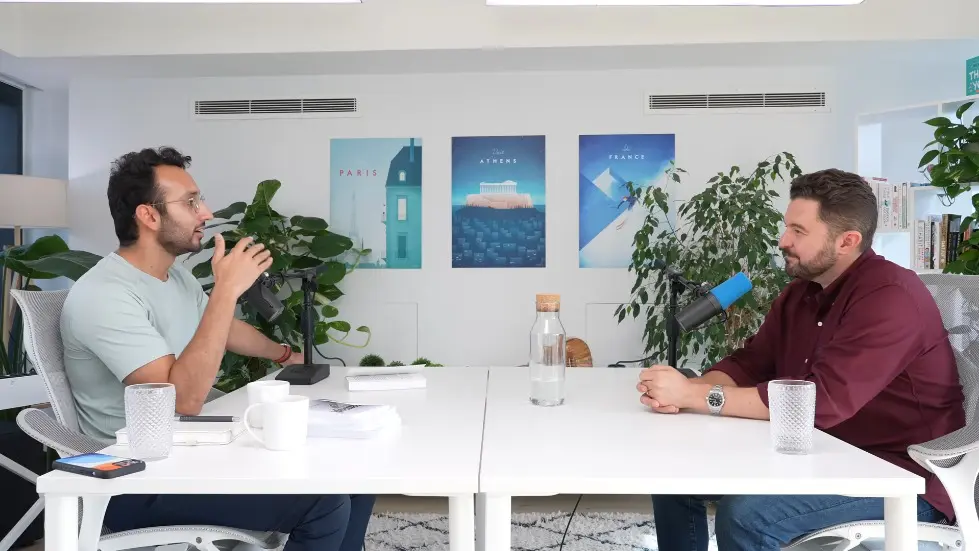
Early Stages of Entrepreneurship
- The first three steps of entrepreneurship are ideation, minimum viable product, and product-market fit.
- These stages are very doable for anyone.
- Scaling up and exiting is relevant to a dwindling number of people.

Life as a Multi-Million Dollar Entrepreneur with Family
- Having a family is the best thing ever.
- Life becomes routine-based and boring with little kids.
- Logistics become a challenge with bigger houses, cars, and nannies.
- Life moves in chapters, and each chapter is different.
- Work-life balance is achievable with a normal work life.

Work Life of a Multi-Million Dollar Entrepreneur with Family
- Starts the day at 9:30 am and finishes around 5-5:30 pm.
- Often has nothing to do during the day and spends time with family.
- Cares more about using acquired skills than making more money.

Professional Success and Making More Money
- Making more money is more about using acquired skills.
- Professional success is not the main priority.

Entrepreneurship and Leverage
- The cool thing with entrepreneurship is that it really starts getting going at 40.
- Entrepreneurs don't really get going statistically until they're early 40s.
- Now, Daniel has a set of resources and team and data and skills that actually he can get a lot done in a fairly short space of time.
- When he thinks about making money, he thinks a lot about leveraging that set of skills and creating fun things.
- He loves doing businesses in partnership with people, especially co-founding with slightly younger people.

Developing Entrepreneurs
- Daniel's infinite game is to develop entrepreneurs who Stand Out, scale up, and make a positive impact.
- He does that through his accelerator programs.
- He develops entrepreneurs who Stand Out, scale up, and have purpose at the heart of their business.
- He has done that with three and a half thousand companies around the world.
- Score app is a piece of technology that solves the number one problem that people have, which is the lead generation problem.

Teaching and Learning
- For Daniel, the infinite game is teaching, learning cool stuff, and teaching it, learning how life Works, sharing it with others, and helping improve their lives.
- He would be really depressed if he was not allowed to do anything on the internet any kind of teaching on the internet for the rest of his life.
- He wants to do it in real life and host like lectures and stuff.
- He realizes that for him, the infinite game is teaching, learning cool stuff, and teaching it, learning how life Works, sharing it with others, and helping improve their lives.
- He is interested in reading philosophy, economics, and politics.

The Risk of Winning Strategy Becoming Losing Strategy
- When you discover how great life can be with fun, freedom, and flexibility built in, you often become very picky about your partner who you're going to settle down with and have kids with and all that sort of stuff.
- Therefore, you get a lot of people like Tim Ferriss who are notoriously single and footloose fancy-free and not having kids and all that sort of stuff.
- There can be this risk that you've got your life set up so well that you don't want to disrupt it with a partner or kids.
- That can be where your winning strategy becomes your losing strategy.
- The book called The Second Mountain by David Brooks talks about two mountains in life.

First Mountain vs Second Mountain
- The first mountain is all about optimizing for freedom, fun, and flexibility.
- The second mountain is all about investing, committing, building a home, and giving oneself to a cause.
- Getting off the first mountain onto the second is important.
- People constantly search for new highs of fun, freedom, and flexibility.
- It's important to have the second mountain.

Final Ask and Entrepreneurship
- Don't watch the news and spend more time doing positive things.
- The world is actually a really amazing place right now.
- It's an incredible time to be an entrepreneur.
- Study it, learn it, get some mentors, get some people around you, and go for it.
- Leave a review on the iTunes Store or leave a comment on YouTube.
- Hit the Subscribe button if you aren't already.
Watch the video on YouTube:
How Anyone Can Develop The Mindset Of A Multi-Million Dollar Entrepreneur - Daniel Priestley - YouTube
Related summaries of videos:
